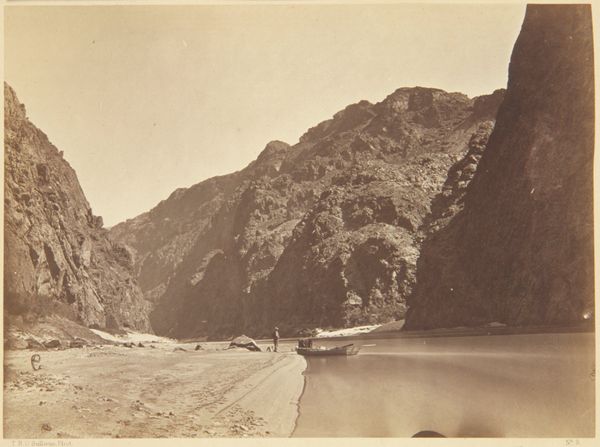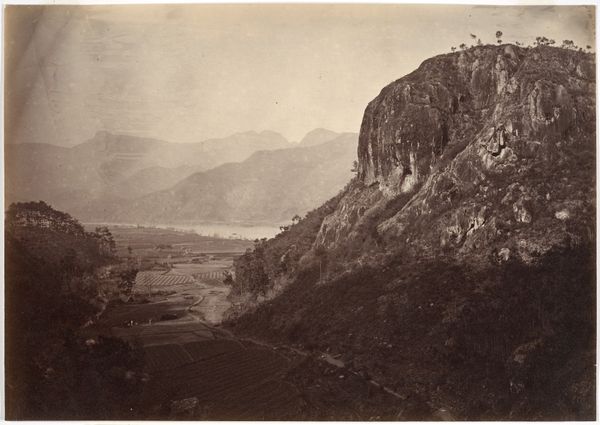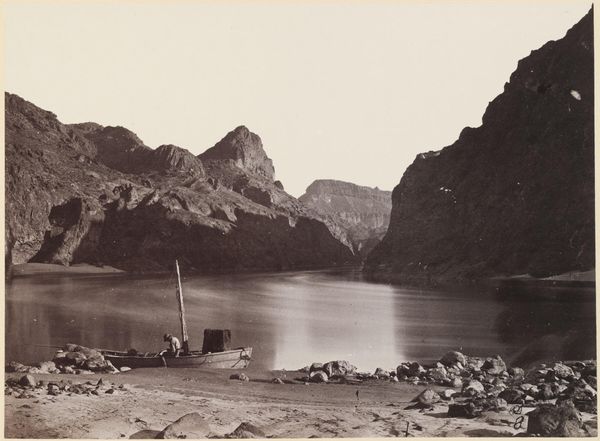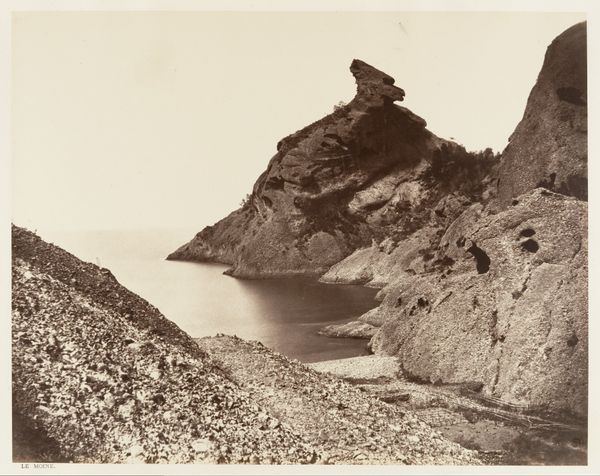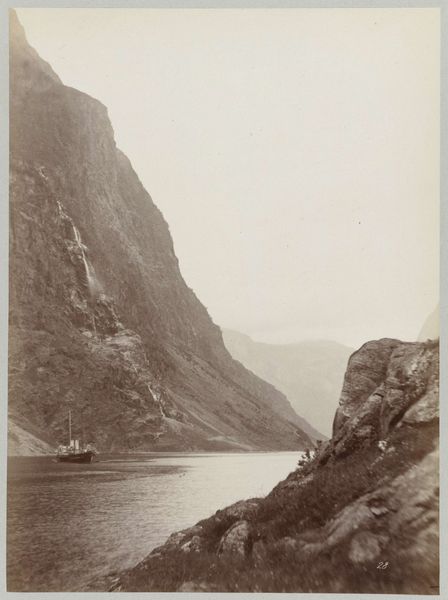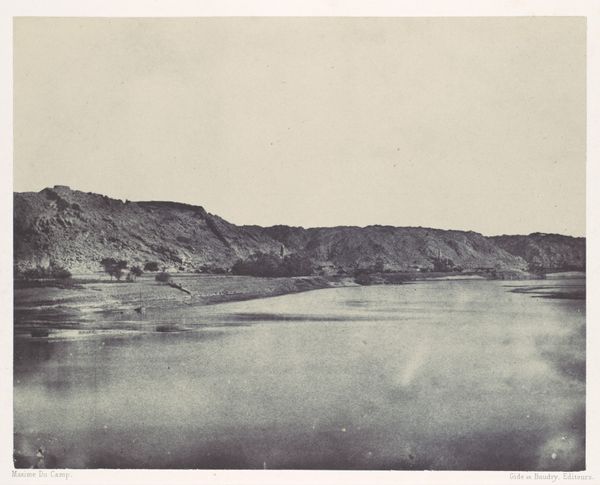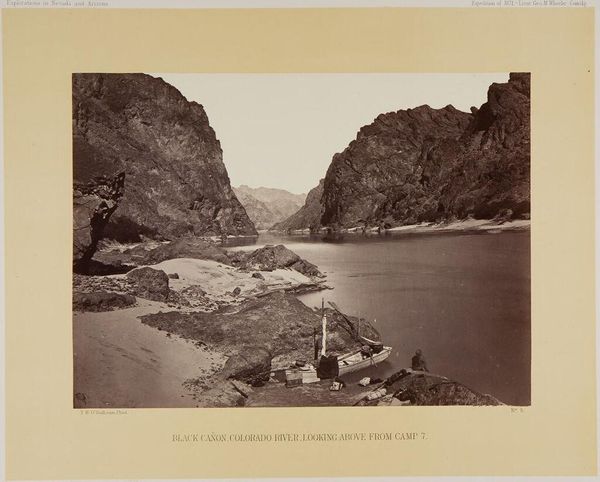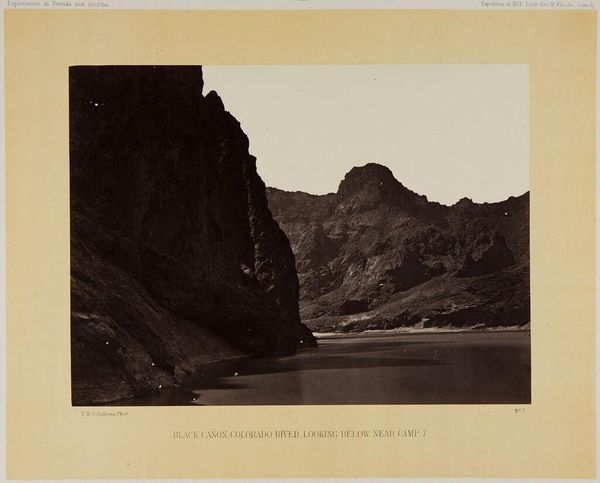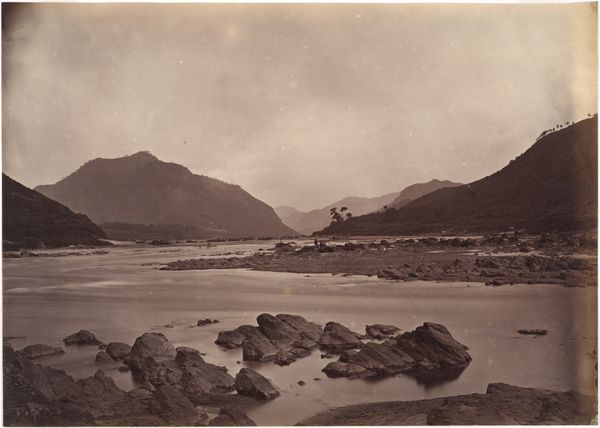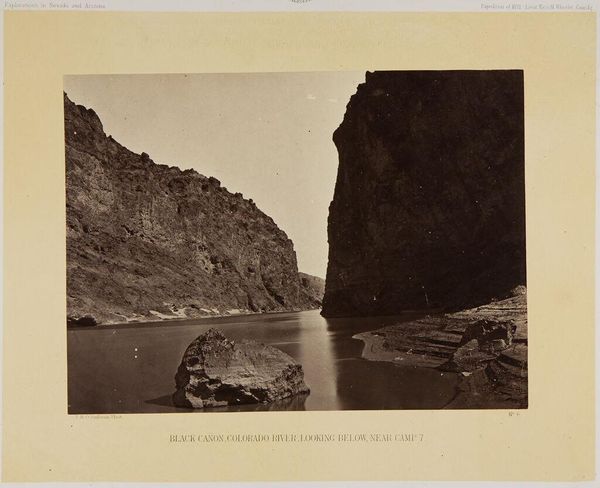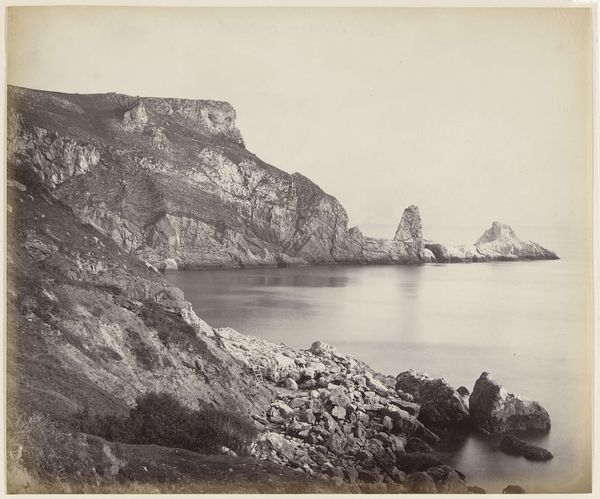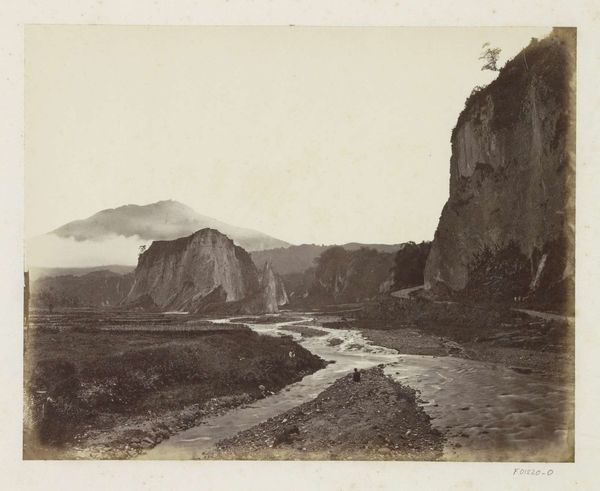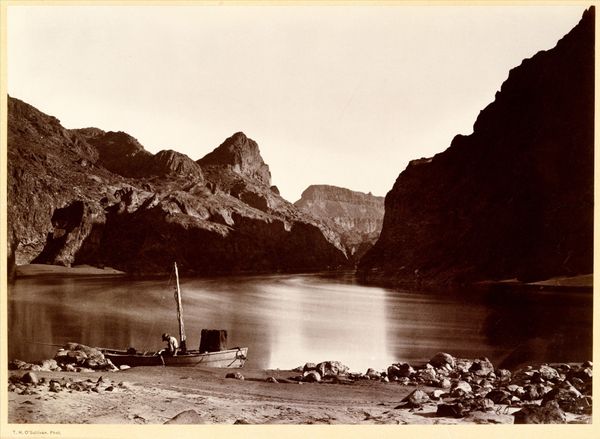
Dimensions: sheet: 20.3 x 27.6 cm (8 x 10 7/8 in.) mount: 41 x 50.6 cm (16 1/8 x 19 15/16 in.)
Copyright: National Gallery of Art: CC0 1.0
Curator: Timothy O'Sullivan’s photograph, "Iceberg Canyon, Colorado River, Looking Above," was captured in 1871. The sepia tones really give it a sense of both history and timelessness. What are your first impressions? Editor: My immediate feeling is one of solitude and awe. The figure is dwarfed by the monumental canyon, highlighting a certain human vulnerability. The composition directs our gaze upwards, encouraging a feeling of sublime respect for nature. Curator: Exactly. It's crucial to contextualize this photograph within the socio-political landscape of the American West at that time. The frontier was being “discovered”, surveyed, and ultimately exploited, under the banner of Manifest Destiny. The lone figure arguably is an attempt to place an Anglo presence in the frame, but it doesn't overshadow the monumental geologic evidence. Editor: So you're seeing this not merely as landscape photography, but as a document deeply intertwined with the rhetoric of expansionism? Curator: Precisely! The photographic surveys played a key role in promoting western settlement and resource extraction. And how that endeavor impacted indigenous people. The framing subtly justifies colonialist claims of discovery and dominion. It asks questions about land usage, colonialism and historical documentation. Editor: I can certainly see that. I am also curious about the technical process. Producing these images must have been a physical ordeal. O'Sullivan’s glass plate negatives were heavy and unwieldy, yet he managed to produce work of incredible detail and nuance within demanding circumstances. The labor here isn't just artistic; it is also heavily industrial. Curator: Definitely! It forces a consideration of the physical and social labor required to construct the dominant visual narrative of the West. Editor: Well, seeing it through both a technical and sociopolitical lens adds a valuable layer of complexity. It bridges that historical moment to contemporary discussions about power, representation, and our relationship to the natural environment. Curator: And understanding O'Sullivan’s work encourages us to deconstruct dominant narratives and seek out marginalized perspectives, complicating the image of grand expansionism with the human consequences it inevitably has.
Comments
No comments
Be the first to comment and join the conversation on the ultimate creative platform.
